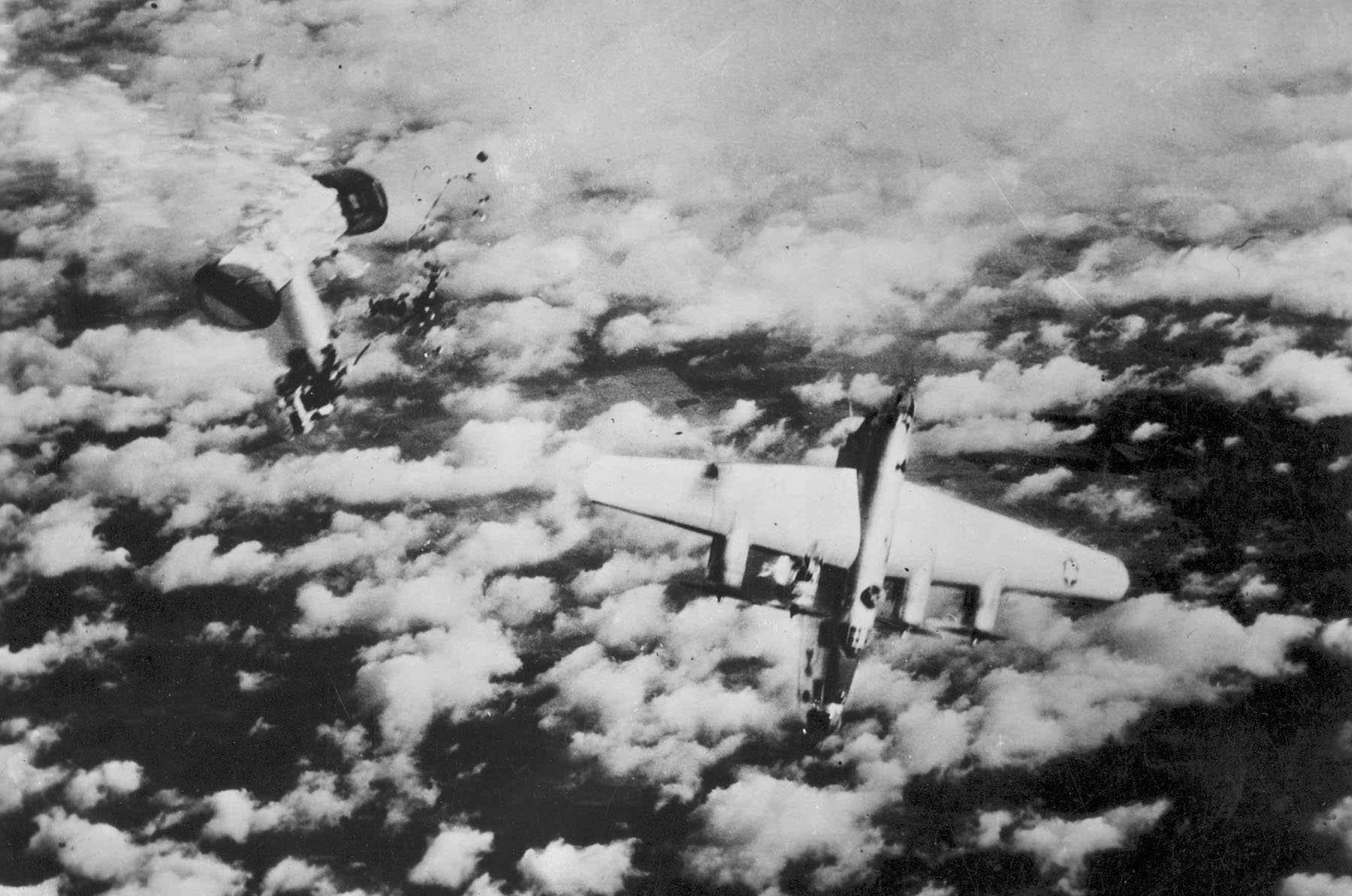
4 April 1945: 0928 at 51°31′ N., 10°18′ E, east of Hamburg, Germany, a Messerschmitt Me 262 A-1 Schwalbe twin-engine jet fighter shot down this B-24 with an R4M rocket.¹
The four-engine bomber was a Ford B-24M-10-FO Liberator, serial number 44-50838—a very long range heavy bomber assigned to the 714th Bombardment Squadron (Heavy), 448th Bombardment Group (Heavy), and based at RAF Seething (USAAF Station 146), Norwich, England.
No parachutes were seen.²
Germany surrendered 31 days after this photograph was taken.
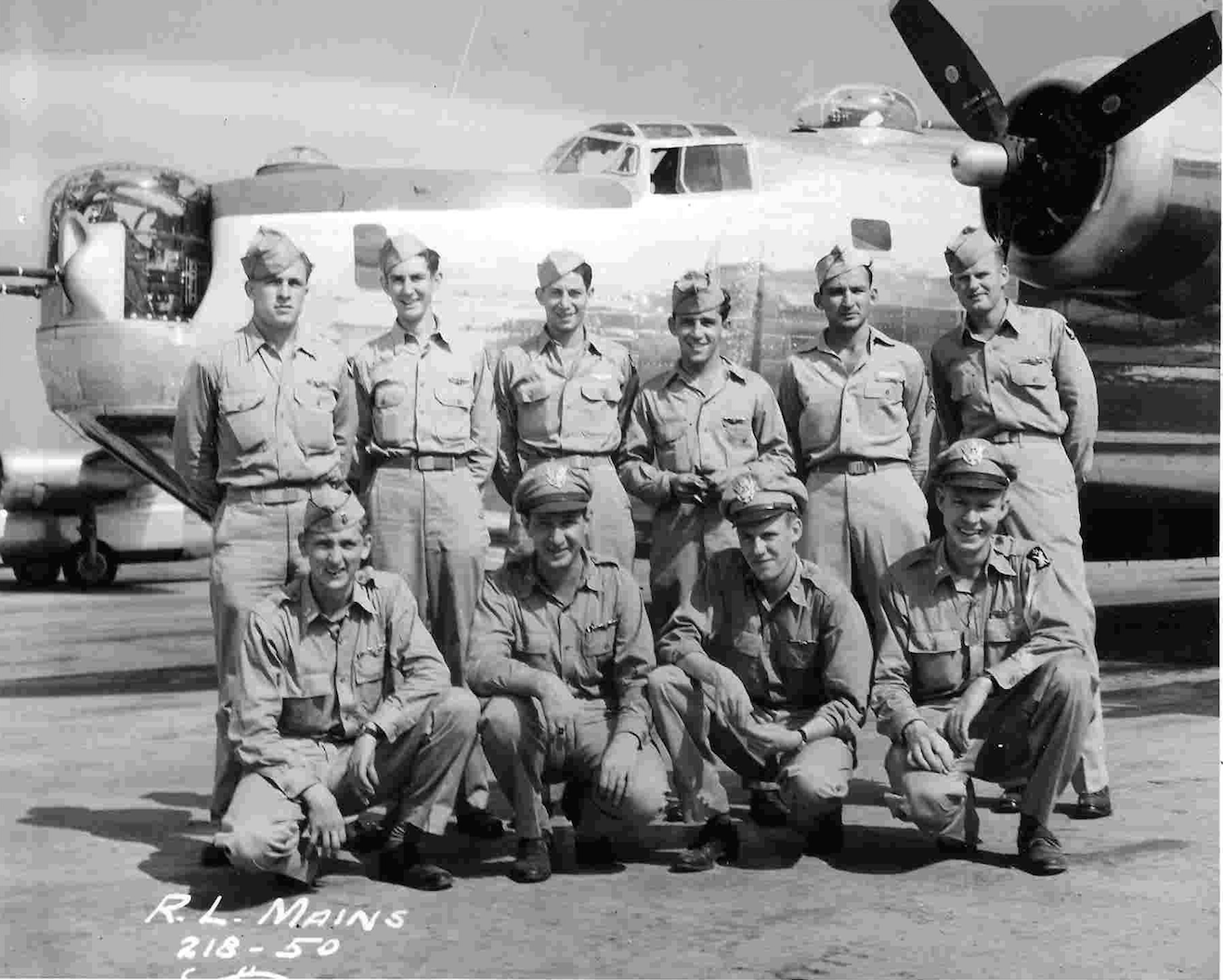

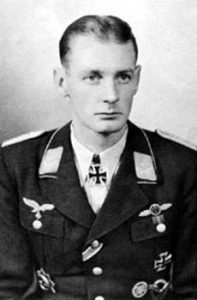
¹ Ford B-24M-10-FO Liberator 44-50838 was shot down with an R4M rocket fired from a Messerschmitt Me 262 A-1 twin-engine jet fighter, flown by Oberleutnant Rudolf Rademacher of Gruppe II, Jagdgeschwader 7 (11./JG 7), based at Parchim, Germany. Rudi Rademacher was a veteran of more than 500 combat missions, credited with at least 97 victories (and as many as 126), including 16 four-engine heavy bombers.
² TDiA has been informed by his grandaughter that Radio Operator, Technical Sergeant Charles E. Cupp, Jr., did survive. He was able to escape from the doomed bomber through its bomb bay. He was captured and held as a Prisoner of War.
³ MISSING AIR CREW REPORT:
© 2018, Bryan R. Swopes
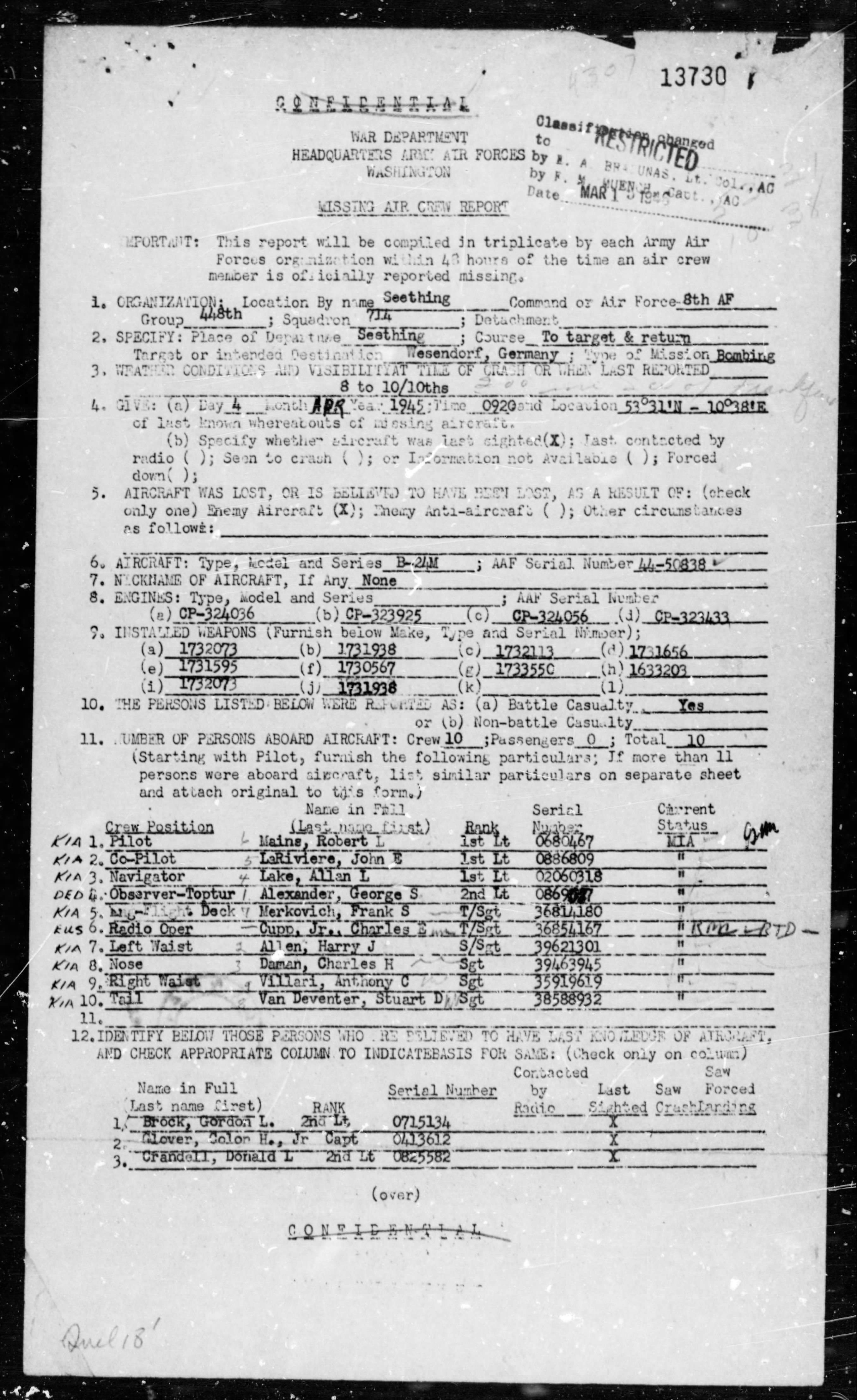
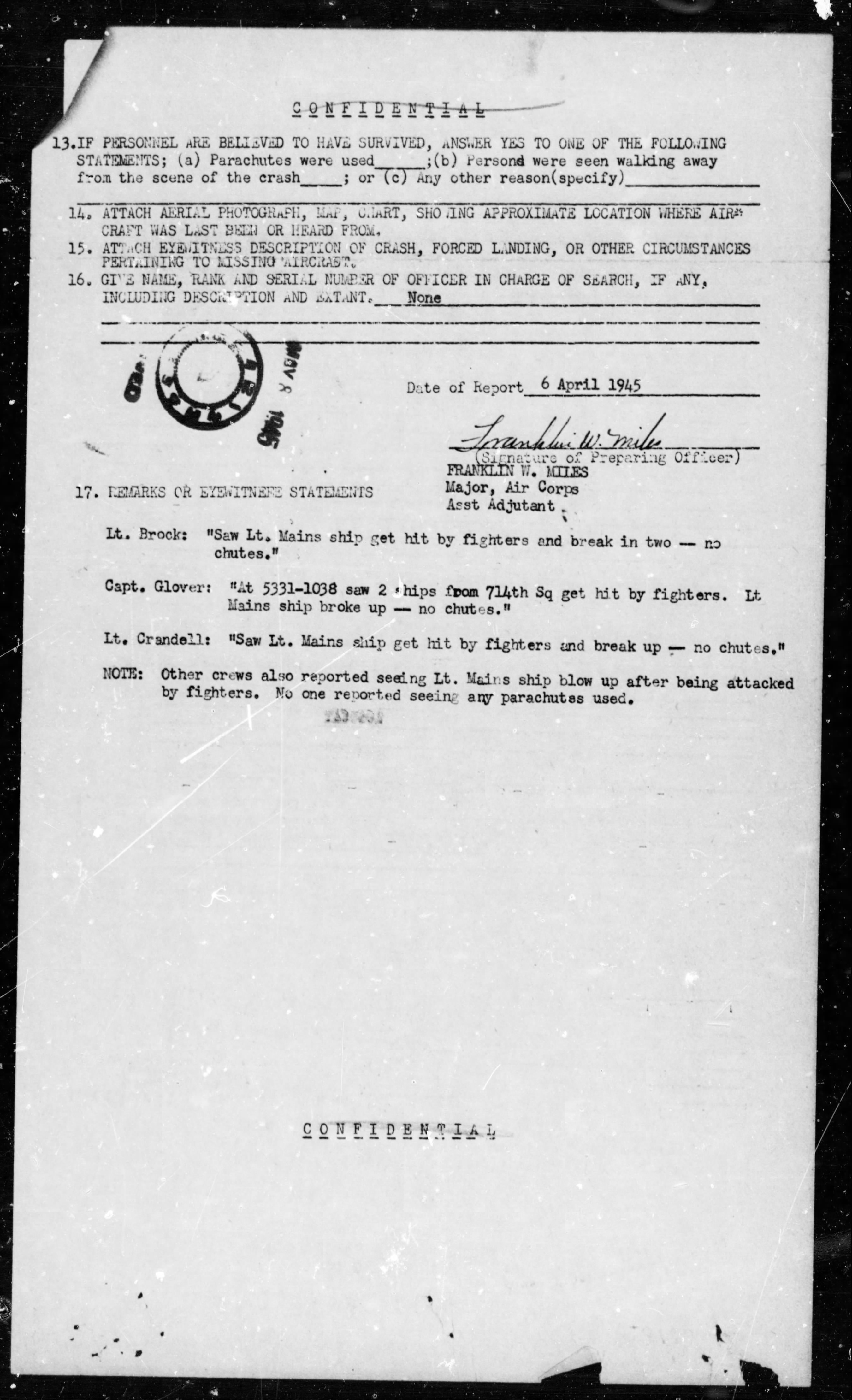
Radio Operator: Charles E Cupp Jr, Escaped the B-24M 44-50838 Via the Bomb bay doors, and opened his Parachute @ 2000 feet.
Crew from MACR report for the mission on 4/4/1945 for the above photo.
Pilot: Robert L. Mains
Co-Pilot: John E. LaRiviere
Navigator: Allan L. Lake
Observer-Top Turret: George S. Alexander
Engineer-Flight Deck: Frank S Merkovich
Radio Operator: Charles E Cupp Jr
Left Waist Gunner: Harry J. Allen
Nose Gunner Gunner: Charles H. Daman
Right Waist Gunner: Anthony C Villari
Tail Gunner: Stuart D. Van Deventer
Lt. Robert Mains was a pilot of a replacement crew that joined the 448th, 714th Sq in Sep 44.
His Crew:
Lt. Robert L. Mains (P)
Lt. Allen L. Lake (CP)
Lt. John B. Hankin Jr (N)
Lt. Jon W Johnson (B)
Cpl Charles E Cupp Jr
Cpl Harry G. Allen
Cpl Charles H Daman
Cpl Frank S Merkovich
Sgt. Antonio Munoz Jr
Cpl Anthony C Villari
were the crew members. (Changes may have been made)
This ship was a Ford-built B-24M, serial number 44-50838. She was shot down by a German Messerschmitt Me 262 (the first jet fighter ever used in aerial combat) on April 4th, 1945 by an R4M Air-to-air missile . Ed Chu was a tail gunner in the 448th and saw Charlies plane go down and thought for sure no one survived. But fortunately for Chuck (Charles E. Culp Jr.) he was able to jump out of the bomb bay doors and get his chute to open about 2000 feet above the ground for a safe landing even though he was captured by enemy forces.
History Credit to Harolds Tribute to the 448th: hqmc2.tripod.com/id6.html
https://www.flickr.com/photos/21734563@N04/sets/72157611545727574/comments/
Thanks for that information, Joolz.
Did you know? (You probably did) That there were no privates or corporals in combat bomber crews.
From: “Into the Fire” – Ploesti the most fateful mission of World War II – by Duane Schultz p.49.
“Pilots, Co-Pilots, Bombardiers, and Navigators were officers. The other six members of the usual 10 man crew, including the engineer, radioman and gunners were sergeants, even those fresh out of training school, for a reason relating to Hermann Goering, head of the Luftwaffe, who had been a fighter pilot during World War I.
Whatever his faults and excesses, and there were many, Goering had great respect for airmen. As a result, he personally saw to it that captured British and American airmen were held in Prisoner of War camps administered by the Luftwaffe, rather than those run by the German Army, or Gestapo. And he insisted that his camps provide better food and facilities than the camps for captured ground troops
In addition, the Luftwaffe provided differential treatment of prisoners by rank. Officers fared better than enlisted men sergeants better than privates or corporals. Consequently the U.S. Army Air Force decided that all enlisted men flying combat missions be made sergeants.
Did I read wrong, or were there 5 Corporals in the crew of that B-24 in the story?
No, you read correctly. That was while they were in training in the United States. Once deployed to Tthe ETO, they were promoted to sergeant, based on their aerial gunner specialty.
There was a second B24 in that raid that got shot down. One of the crew members on that aircraft was a high school friend of my father’s. Although some of that crew survived, my fathers friend did not.